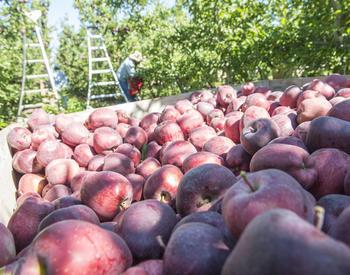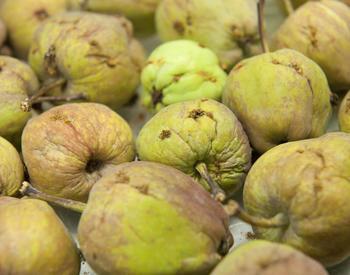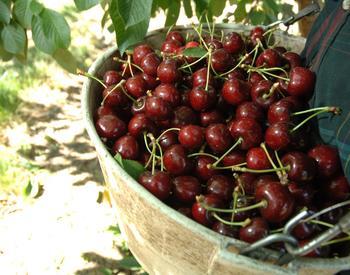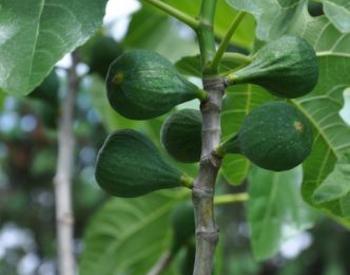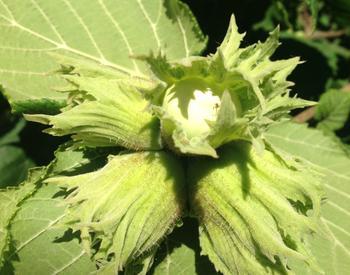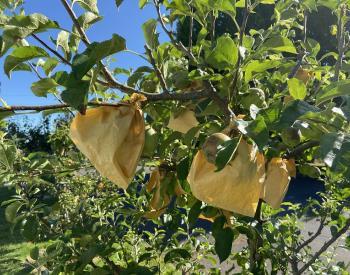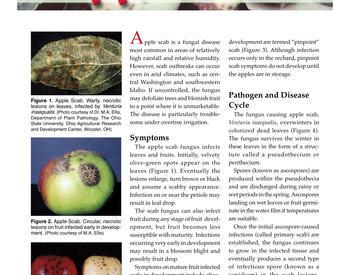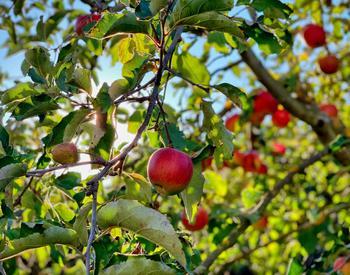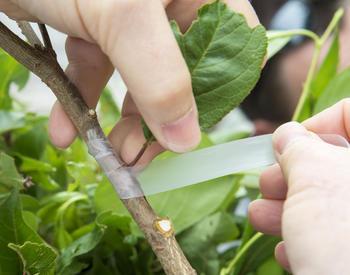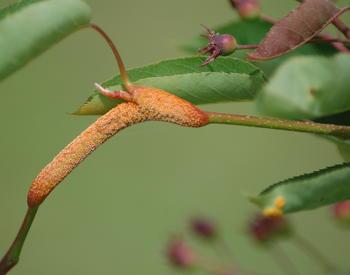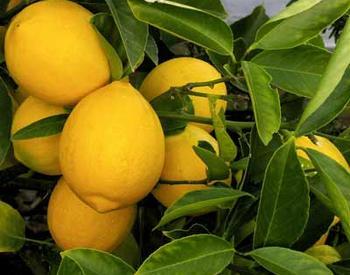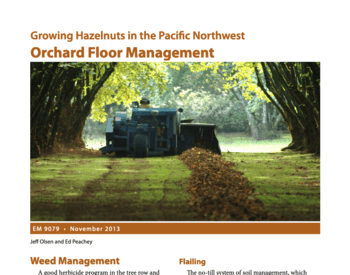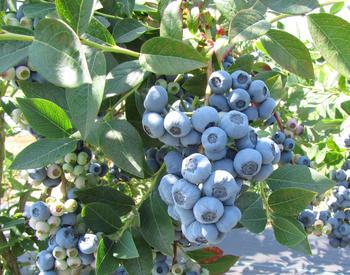Homeowners often look at pest management as the most difficult aspect of raising fruit crops. Most people either lack the knowledge to identify and control insect pests and diseases, or they dread having to spray chemicals to protect their crops. Homeowners and tree fruit producers should try to raise their crops sustainably. Sustainable gardening is a process that thrives with minimal inputs of water, fertilizer, pesticides and labor. Raising fruit crops with fewer inputs is possible when your knowledge level of subject material is high.
The first step to sustainable pest control is to know what insects and diseases are most likely to occur in your area. In each area of the country, certain diseases and pests tend to dominate depending on climate and other regional influences. In western Oregon, fungal diseases thrive because of our wet, mild winters and spring. Oregon residents should look at our guide for diseases and pests, which is also posted at this web site. This guide shows what pests to expect for each fruit type and the time of the year the pest can be expected.
Another step to take toward sustainability is to have healthy soil with the proper pH, good drainage, and adequate fertility. What do these have to do with pest management? The soil and these other factors contribute to the health of your tree. If your tree is healthy, it will tolerate disease and pest problems to a greater degree than an unhealthy tree.
Pest control is easier when a tree is planted in the right place for light and drainage. Select a variety resistant to common diseases in your part of the country. Choosing an apple scab resistant variety of apple, such as Liberty, allows a homeowner in western Oregon to ignore this troublesome disease.
Learn which insects are the good guys and which are the bad guys. This will reduce your anxiety when you see bugs in your trees.
Learn the level at which bad guys become a problem. Pheromone traps monitor codling moth, leaf rollers or fruit flies. Use one to two traps per acre to monitor these pests. Most traps have a sticky substance that catches the insect. These traps monitor the level of insect infestation in your trees. For example, when five codling moths are trapped in any one week in late May, it is time to apply your control. By timing your sprays, you will use significantly less pesticide than old spray systems that encouraged people to spray every two weeks. I have reduced my scab and codling moth sprays from five to six sprays per season to two well-timed sprays. Traps can be purchased from farm supply stores.
Many pests can be controlled with dormant sprays. These sprays are usually made in the fall around Thanksgiving, in mid-January, and again when fruit buds begin to swell but are not yet open. Dormant sprays usually mix a fungicide like copper with dormant oil, or sulfur alone. Dormant oil smother insects or insect eggs on bark or around buds. The fungicide is ridding the tree of fungal spores. For specifics about fruit trees and pests, see our posted spray guides.
Homeowners who want sustainable or organic standards should use cultural steps before sprays. For example, when controlling apple scab, plant a resistant variety of apple. such as Liberty. We also recommend cleaning up old leaves and fruit from around the tree in the fall. Mowing and spreading compost around your tree is usually enough to cause the leaves to decompose. This reduces the amount of disease inoculum when the tree starts growing in the spring. Pruning your trees to provide plenty of sunlight and air movement through the canopy helps reduce fungal disease problems. For every disease and many insect pests, cultural steps and orchard sprays make control more effective.
For the safety of homeowners and neighbors, use the least toxic or organic materials for spraying. Look for specific recommendations in our spray guide. For fungal disease control, use any of the following products: sulfur, copper, wettable sulfur, stylet oil, or potassium bicarbonate as low impact materials. For insect control use: Kaolin clay, spinosad product Entrust, Cyd-X (a virus that kills codling moth), horticultural oil, and microbials like Dipel or Javelin. All these products have been formulated for organic growers. When using pesticides, even organic ones, always read the labels and wear personal protective equipment. At a minimum wear long pants, long sleeve shirts, waterproof shoes, waterproof gloves and a hat. I always use full rain gear, boots, gloves, eye protection and a simple respirator.
